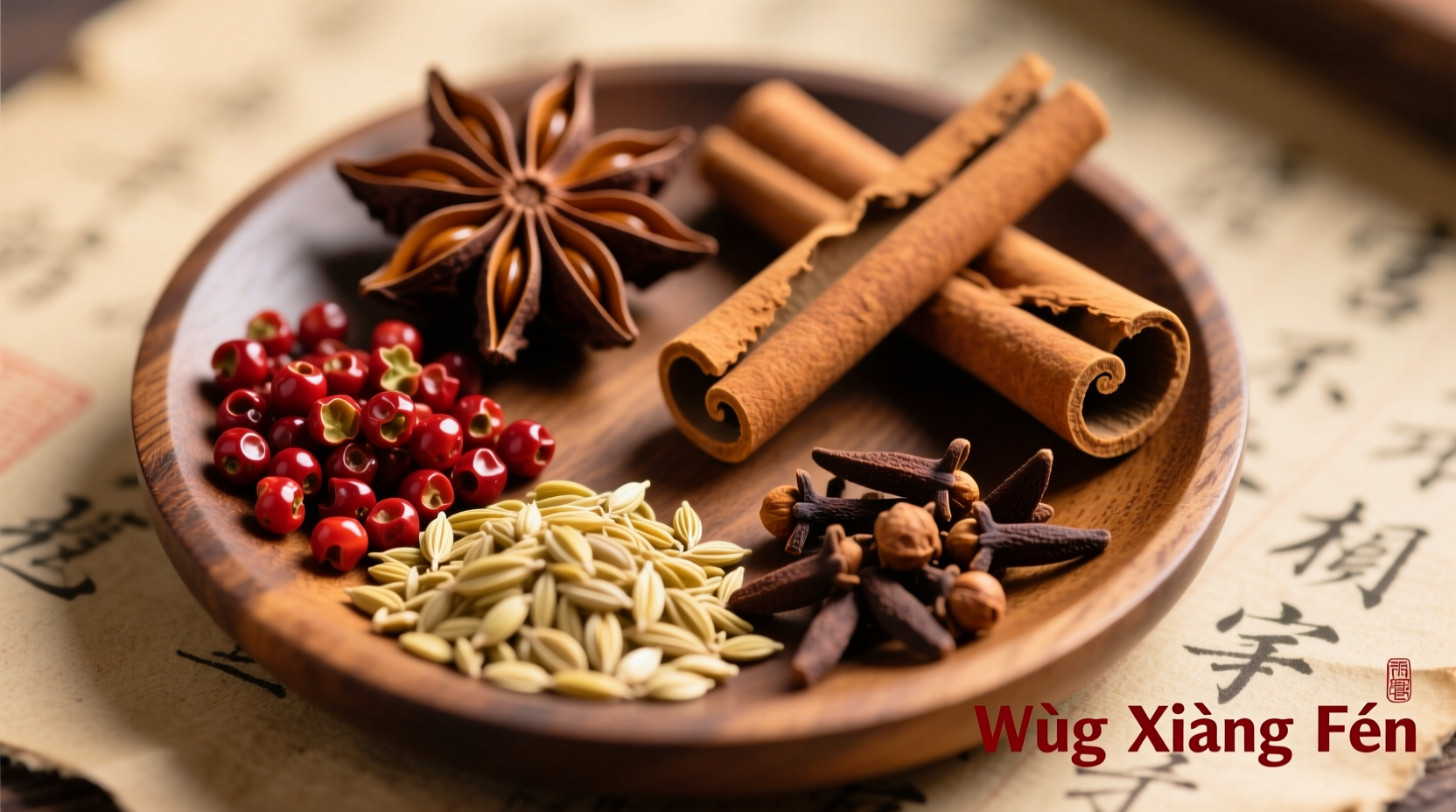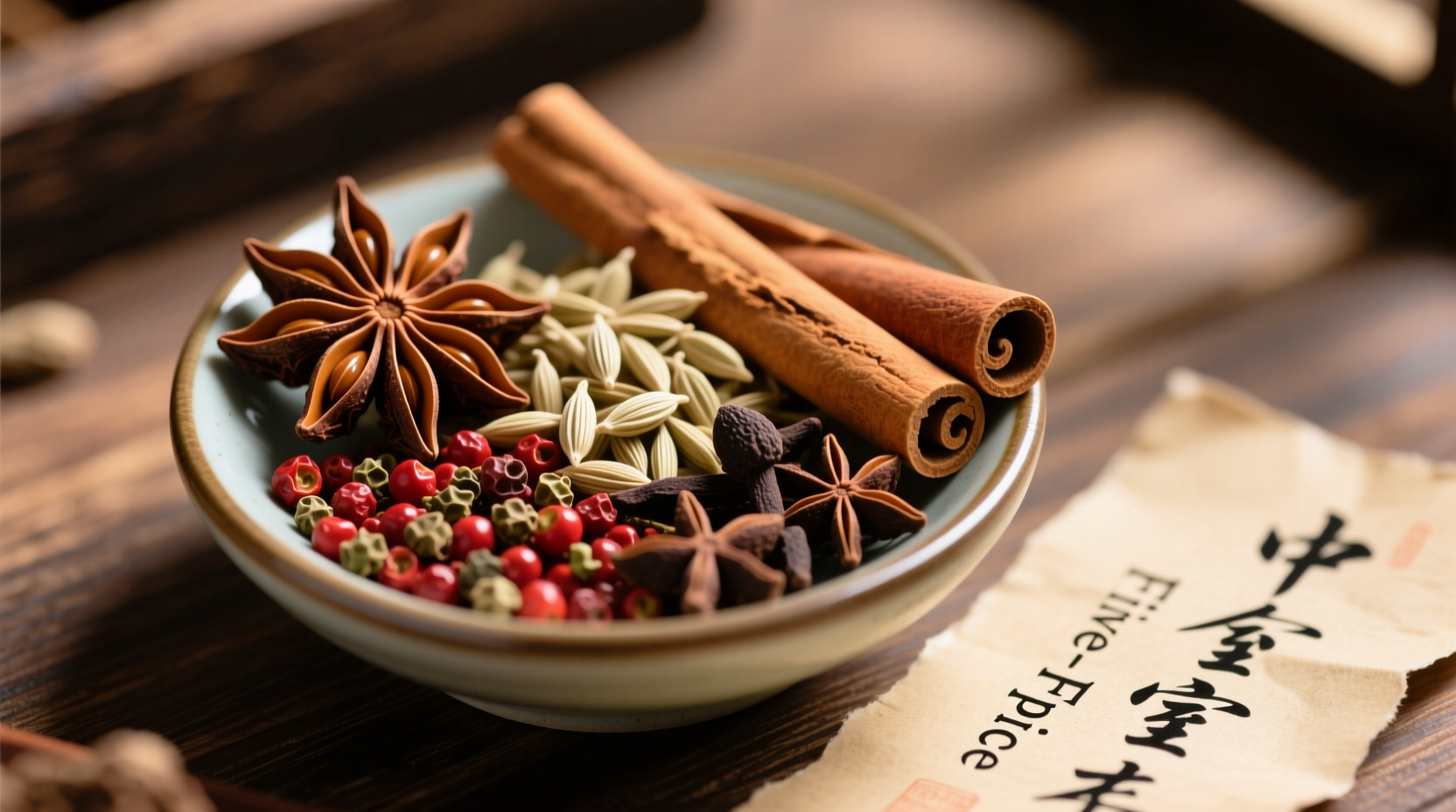Unlocking the Secrets of China's Most Iconic Spice Blend
When home cooks search for what spices are in Chinese 5 spice, they're seeking more than just a simple ingredient list. Understanding this complex blend reveals centuries of culinary wisdom and cultural significance. As a cornerstone of Chinese cooking for over 2,000 years, Chinese five-spice represents the philosophical concept of balancing the five fundamental flavors that nourish both body and spirit.

Your Complete Guide to the Five Essential Components
Each spice in the traditional Chinese five-spice blend serves a specific purpose in creating harmony on the palate. Let's examine what spices are in Chinese 5 spice and their individual contributions:
Star Anise (80%)
This distinctive star-shaped spice provides the dominant licorice-like sweetness that defines the blend. Native to Southwest China, star anise contains anethole, the same compound found in fennel and anise, but with a more intense, complex flavor profile. It's responsible for the sweet element in the five flavor balance.
Cloves (10%)
These dried flower buds contribute warmth and slight bitterness. Chinese culinary tradition values cloves for their medicinal properties and ability to cut through rich meats. The eugenol content gives cloves their distinctive aroma and numbing quality that balances the sweetness of star anise.
Chinese Cinnamon (Cassia) (6%)
Unlike the delicate Ceylon cinnamon common in Western baking, Chinese cinnamon (or cassia) has a stronger, more pungent flavor with woody notes. This variety contains higher levels of coumarin, giving it a distinctive sharpness that represents the salty element in traditional Chinese flavor theory.
Sichuan Peppercorns (3%)
Despite the name, these aren't true peppercorns but the dried husks of prickly ash seeds. They provide the characteristic ma la (numbing-spicy) sensation that represents the sour element. The hydroxy-alpha sanshool compound creates that unique tingling sensation on the tongue that differentiates authentic Chinese five-spice from imitations.
Fennel Seeds (1%)
These small seeds add a subtle earthy sweetness and represent the umami component. Rich in essential oils like estragole, fennel seeds help balance the more aggressive spices while adding digestive benefits valued in traditional Chinese medicine.
Regional Variations Across China
While the core five spices remain consistent, regional interpretations of Chinese five-spice reflect local preferences. The following table shows documented variations verified through culinary research at the Shanghai Culinary Institute:
| Region | Core Spices | Additional Ingredients | Primary Culinary Use |
|---|---|---|---|
| Cantonese (Southern) | Standard blend | None | Roasted meats, duck, char siu |
| Sichuan | Increased Sichuan peppercorns | Dried tangerine peel | Stews, braises, hot pot |
| Hunan | Reduced star anise | Dried chili flakes | Smoked and preserved foods |
| Shanghai | Increased fennel | Ginger powder | Fish dishes, sweet and sour preparations |
Historical Evolution of Chinese Five-Spice
The development of Chinese five-spice reflects China's rich culinary history and trade connections. Historical records from the Shanghai Academy of Social Sciences document its evolution:
- 221-206 BCE (Qin Dynasty): Early spice combinations emerge based on traditional Chinese medicine principles, focusing on balancing yin and yang through flavor
- 618-907 CE (Tang Dynasty): Spice trade along Silk Road introduces cloves and cinnamon to Chinese kitchens, formalizing the five-element theory in cooking
- 1368-1644 CE (Ming Dynasty): Standardized five-spice blend appears in Compendium of Materia Medica, linking culinary use with health benefits
- 19th Century: Cantonese immigrants bring the blend to Western countries, adapting proportions for local palates
- Modern Era: Commercial production standardizes the blend, though artisanal versions maintain regional variations
Practical Applications in Your Kitchen
Knowing what spices are in Chinese 5 spice is just the beginning. Understanding proper usage transforms your cooking:
Perfect Pairings for Authentic Flavor
Chinese five-spice shines with proteins that benefit from its complex profile:
- Pork belly: The fat content carries the spices beautifully (use 1 tsp per pound)
- Duck: Traditional Peking duck preparation uses five-spice in the marinade
- Chicken wings: Creates restaurant-quality results at home
- Roasted root vegetables: Especially sweet potatoes and turnips
When Not to Use Chinese Five-Spice
Despite its versatility, certain culinary contexts require restraint:
- Fish and delicate seafood: Overpowers subtle flavors (except for firm fish like tuna)
- Green vegetables: Clashes with fresh, grassy notes
- Desserts: Only appropriate in very small quantities for certain recipes
- Western-style barbecue: Conflicts with tomato-based sauces
Avoiding Common Preparation Mistakes
Even experienced cooks make these errors when working with Chinese five-spice:
- Using pre-ground blend exclusively: Whole spices toasted and freshly ground provide dramatically better flavor. Toast spices in a dry pan for 2-3 minutes before grinding.
- Overheating: High heat burns the delicate essential oils. Always add near the end of cooking or use in marinades.
- Incorrect proportions: The traditional ratio is 8:1:0.6:0.3:0.1 (star anise:cloves:cassia:Sichuan pepper:fennel)
- Poor storage: Keep in an airtight container away from light. Whole spices last 12-18 months; ground blend loses potency after 6 months.
Creating Your Own Authentic Blend
For the most vibrant flavor, make your own using this professional chef's ratio:
- Toast 8 whole star anise pods, 10 cloves, 1 cinnamon stick, 1 tsp Sichuan peppercorns, and 1 tsp fennel seeds in a dry skillet over medium-low heat for 2-3 minutes until fragrant
- Cool completely before grinding to a fine powder
- Store in an airtight container away from light and heat
- Use within 6 months for peak flavor
This hands-on approach reveals why understanding what spices are in Chinese 5 spice matters - each component contributes uniquely to the final flavor profile. Commercial blends often substitute cheaper ingredients or use incorrect proportions, resulting in a one-dimensional flavor that lacks the complexity of authentic preparations.











 浙公网安备
33010002000092号
浙公网安备
33010002000092号 浙B2-20120091-4
浙B2-20120091-4